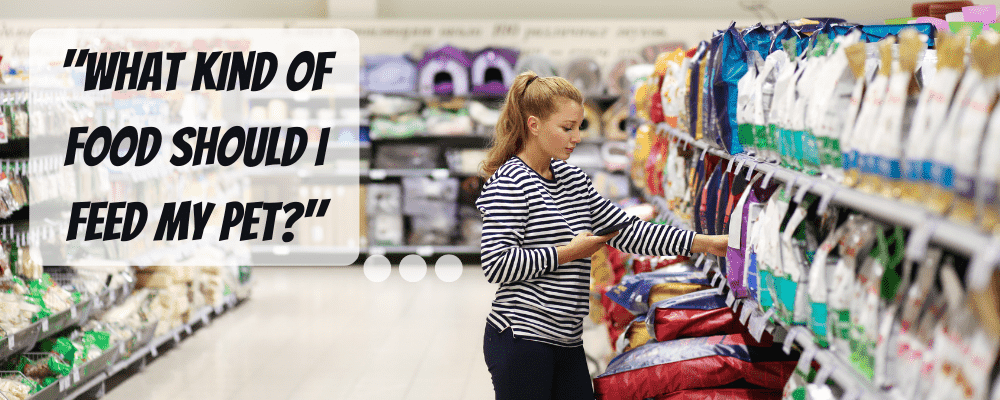We often get asked, “What kind of food should I feed my pet?” It is not a simple question to answer, as there are many variables, but here are some basic criteria to consider:
The specific nutritional needs of the pet
- Species
- Life stage- puppy/kitten; adult; mature. Avoid “all lifestages”
- For puppies, is it a large breed?
- Medical conditions- renal disease, heart disease, etc.
- Body condition- does the pet need to gain or lose weight?
- Known food allergies
A reputable manufacturer
- Are the diets formulated by a veterinary nutritionist or a PhD in nutrition? You can call the number on the bag to ask
- Does the company own their own manufacturing plants?
- Do they conduct and publish nutritional research?
- Do they use strict quality control testing and standards?
- Do they have a low rate of product recalls?
Which pet food companies do we recommend? These companies meet the criteria listed above:
Best: Hills, Royal Canin, Purina Pro-Plan
Best grocery store brands: Iams and other Purina products
Remember, price does not always indicate quality
Therapeutic Diets
There are certain disease conditions that may benefit from therapeutic diets. We will publish a blog article in a few days on this topic. If your pet has any of these conditions, be sure to discuss dietary management with your veterinarian.
Ingredients Lists
Ingredients are listed in order of weight, but manufacturers play games. Some weigh the meat wet, when it is heavier, then dehydrate it. Others dehydrate the meat, then weight it. Some divide the grain portion into 2-3 types, so that each type weighs less than the total grain portion.
Ingredients must be safe, and provide nutrition or some other benefit. If the pet has a food allergy then you must check labels to make sure that ingredient is not present. But as long as the ingredient is safe and nutritious, focus on the nutrients, not the ingredients. Ingredients provide nutrients. It is the nutrients that are important.
Guaranteed Analysis
This is another bit of information that is almost worthless. It gives maximums and minimums, but doesn’t tell you the actual amount. At most it gives you a guideline- the actual content is usually about 2% above the minimum or 2% below the maximum.
Diets should have an “AAFCO Statement” indicating if the diet was only formulated to meet standards or if a food trial was done to prove its nutritional value. Prefer an AAFCO statement indicating that a food trial was done. Diets that are “formulated” are less desirable.
Other marketing terms
Natural- made of plant, animal or mined sources that have not been chemically synthesized or altered and no synthetic additives have been added other than vitamins, minerals and other trace nutrients
Organic- crops grown on land free from pesticides for 3 years; livestock fed organic feed, not given antibiotics or hormones, and allowed access to outdoors. The USDA makes no claim that these foods are more nutritious or safer.
Premium, Super Premium, Ultra-Premium, Gourmet- no official definition
Holistic- no legal definition
Human grade- no legal definition
What about home-prepared diets?
There are advantages and disadvantages to home-prepared diets. An advantage is that it give you total control of the ingredients which can be especially helpful with some food allergies. But there is the potential lack of nutrient balance. Also, they can be time consuming and costly to prepare.
Consider a hybrid. Supplement a commercial diet with wholesome home-prepared foods. Another great way to make sure the diet is balanced is to consult with a Veterinary Nutritionist though web sites such as:
http://vet.tufts.edu/nutrition
Other diet tips
When changing from one diet to another, make the change gradually, especially with picky eaters
Dogs and cats eat roughly half their body weight in food every month, so a 20 pound dog will eat about 10 pounds of food a month
If you would like our assistance in helping you select a diet for your pet, just ask us the next time you have your pet in for an exam, or call now to schedule a nutritional consultation.
